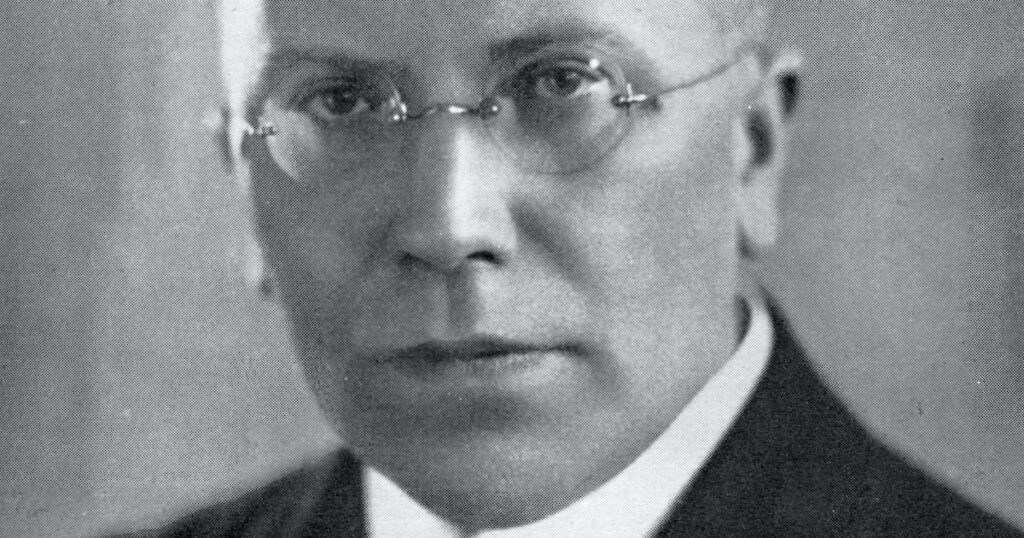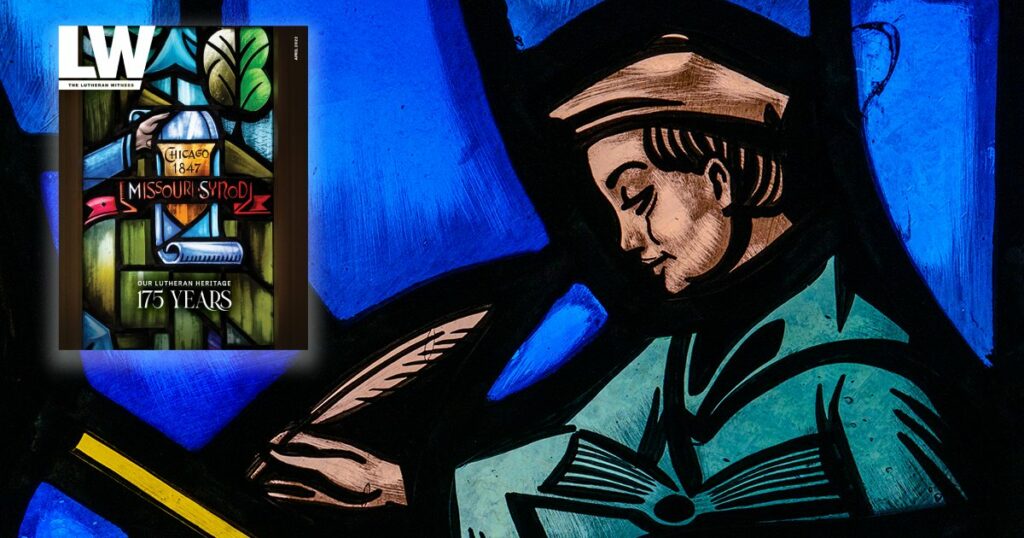Katharina von Bora Luther
A.D. 1499–1552
Born noble, raised to be a nun, then marrying an outlaw reformer and dying in poverty — Katharina understood the cost of clinging to Christ.
In this series, Lutheran historian Molly Lackey will trace the history of the church, from the time of the apostles through the twentieth century. As the Body of Christ, our history transcends time, country and citizenship: “God’s Word is our great heritage.”

Imagine you’re a fishmonger in Wittenberg. You’ve watched as your city has adapted to Dr. Luther’s reforms, but nothing could prepare you for this. The new wife of Martin Luther, Katharina, is making her way towards your stall. A man eyeing a carp in front of you leans over and almost shouts, “I heard that Praeceptor Philipp objected to the marriage! I would too — she’s just a stuck-up nobleman’s brat.” The man laughs, as do others nearby. Käthe is making her way straight towards you: The bride of two weeks must surely be settling into the routines of managing a house by now. You find yourself eyeing her closely, trying to see if she really is pregnant like your neighbor’s charwoman’s sister said — that the new evangelicals had gotten rid of more than just the vow of celibacy, and the good doctor was making an “honest woman” out of the disgraced ex-nun. As Frau Luther purchases tonight’s dinner, the two women at the baker’s stall next to her cross themselves ostentatiously. One hisses to the other, “You know, they say that the Antichrist is to be born of the union of a monk and a nun!” The other looks Katharina straight in the face, exclaims “Disgusting!” and spits at her feet. This pale young woman, who has spent most of her life in the quiet of the convent, returns the gaze of her insulters, then she walks away back to the Black Cloister and her waiting husband. Whatever will become, you wonder, of this Katharina Luther?
Katharina von Bora was born to a minor noble family — the exact location of her birth and identity of her family is not known. She was enrolled in a convent school at a young age, the typical lot of an “extra” daughter, whose upbringing and dowry would otherwise place undue financial strain on a family. This also served as Katharina’s entry into monastic life: In 1515 at age 16, she took her vows and became a nun.
From noble daughter to outlaw reformer’s wife
We know little of Sister Katharina’s life in Nimbschen Abbey, which is itself now in ruins. In fact, the little documentation we have of her life—very little of which was written by the woman herself—provides us with only a sketchy outline of Käthe (the German version of “Katie”). We know that somehow she and a group of other nuns got ahold of Luther’s On the Freedom of a Christian, and that they found his critiques of the medieval Roman Catholic church to be compelling enough that they decided to run away. The gravity of this decision is hard to overstate, as a runaway nun was a legal and social pariah. They escaped from the convent in a wagon carrying barrels of fish (though likely not in the barrels themselves, despite the picturesque nature of this version of the tale).
Upon arriving in Wittenberg, the women were married off — their families refused to accept the ex-nuns back into their homes, and the only way to ensure their physical safety was to find them husbands who would take care of them. Katharina, however, held out: She was unimpressed by the men that Luther suggested to her, until, eventually, she is reported to have counter-offered to marry Luther himself.
Katharina Luther’s life as the wife of the Wittenberg Reformer was a full-time job. In between her gardening, cooking, child-rearing, money managing (a task Martin was notoriously bad at), and, of course, beer-brewing, Käthe dealt with her own share of hardship. The Luther family was never wealthy, and her husband was often busy, stressed, depressed, or away from home. Katharina suffered one miscarriage, lost one baby after birth and lost another daughter, Magdalena, at 13.
Firm in Christ despite slander and hardship
Martin and Käthe became the first “celebrity couple,” with the pair becoming models of married life among German Lutherans, with some even posting broadsheet portraits of the couple in their homes. But this was in spite of equally intense negative public opinions. Katharina was not well liked, and many interpreted what was likely the natural outcome of high birth and formal education as arrogance. Philipp Melanchthon did, in fact, object to the wedding — at the time, he thought clerical marriage would cause unnecessary scandal — though he was also the witness at the ceremony. Horrible rumors spread about Katharina giving birth days after the wedding, notably found in libelous letters written by Catholic reformer and humanist scholar Desiderius Erasmus. This wicked lie, along with other horrid characterizations of Katharina like the ones imagined above, were not only common during her life, but can still be found in history books and anti-Lutheran polemics in print today.
The Luthers truly loved and served one another. This is clear from Martin’s two most famous nicknames for Katharina: “Herr Käthe” (“Lord Katie”) and “my rib.” His death wounded her deeply, and the financial hardship she faced afterwards sealed her fate. Though Luther had willed his estate to his Käthe, because it was illegal for women to inherit property his will was ignored: she was left penniless and homeless. Six years later, Katharina was thrown from a cart and died from complications of her injuries at only 53 years old.
It must have taken great patience and fortitude for Katharina to bear the weight of an uprooted life, nasty gossip and social betrayal. All of the people who said wicked things about her were Christians — and some of them Lutherans, at that. But Käthe clung to Christ, even when her old routines, her reputation, her children, her husband, her home and, finally, her life slipped through her fingers like so much sand. May we, like Katharina von Bora Luther, trust in Christ, even if the whole world is against us.
Editor’s Note: The next installment of this series, on “the second Martin” Martin Chemnitz, will be posted two weeks from today. Check back then or follow us on social media to catch it!
Image: “Portrait of Katharina von Bora,” Lucas Cranach the Elder, 1528.







I am glad my daughter was not forced into a convent at a young age. I am glad my wife can inherit our property if I die first. I am glad girls and women today don’t have to get married just to ensure their physical safety. Equal rights for women are a good thing–too bad Mrs. Luther didn’t get to enjoy them.
Katie Luther was a remarkable Christian woman; however, it’s horrible that she basically got stuck in a convent at 16, had to get married to survive after leaving the convent, and then was thrown out into the street like a piece of trash after her husband died. I’m glad modern girls and women have real rights now and so many more options for their lives. That women don’t have to utterly dependent on their husbands is a good thing. It’s sad that the Lutheran Witness in January 2022 published an article condemning feminism and married women’s property rights. How ironic. Plus, the Luthers had six kids. Were none of them alive and able to support their widowed mother? What about the Saxon rulers that supported Martin? Did they do nothing for Mrs. Luther? What about the church in Wittenberg? Did they let the widow of the Reformer become a pauper? What kind of Christians were these people?